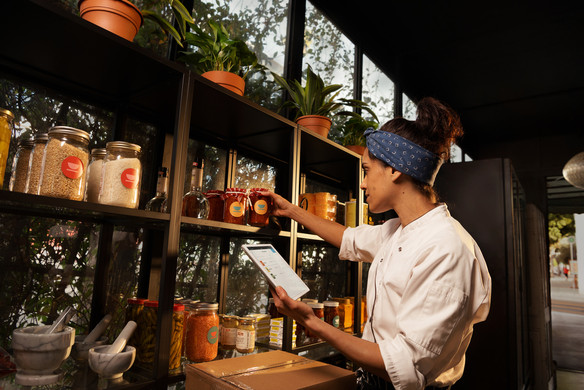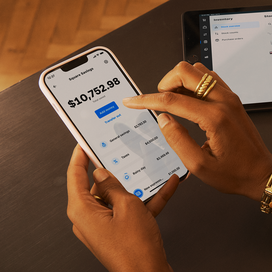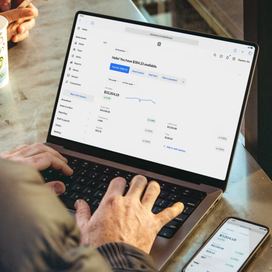Table of contents
Dynamic pricing isn’t new. Even if the term is unfamiliar, you may have experienced dynamic pricing when booking a flight or a hotel. An airline seat or a hotel room might cost you more on a weekend, over a holiday, or for a premium experience. As a restaurant owner or manager, you may already use this strategy without having planned for it. Happy hour specials, prix fixe menus, market price menu items, and children’s discounts are all common examples of dynamic pricing. These types of dynamic pricing are not always updated in real time, but they can be.
Restaurants use dynamic pricing to respond to changes in demand. For example, owners might increase prices during peak periods to maximize revenue or lower prices during off-peak times to attract more customers. For example Noodles & Company rolled out digital menu boards across its locations to cope with inflation, labor shortages, and supply chain issues.
In fact, the Square Future of Restaurants report found that 29% of restauranteurs have considered raising prices to weather a potential recession. Eighty-eight percent of consumers agreed that given the impact of inflation and the rising costs of goods, they would understand if their favorite local business raised prices up to 17%. With the flexibility to adjust pricing based on market conditions and customer needs, now may be the perfect time to explore dynamic pricing as a strategy for your restaurant.
What is dynamic pricing?
Dynamic pricing is a way for businesses to adjust prices for their goods or services based on market demands. This pricing strategy is also referred to as surge pricing, demand pricing, value-based pricing, or time-based pricing. Using dynamic pricing does not mean simply raising prices; you might move them up or down. As a business owner, you may consider dynamic pricing if there is higher customer interest or if supply is limited.
Here are four common dynamic pricing strategies and what they look like in action:
- Surge pricing: Surge pricing happens when there is a sudden, temporary spike in demand, leading to an immediate price increase. This strategy often relies on technology and automation to monitor real-time demand and adjust prices accordingly. For example, food delivery apps may charge higher fees during peak dinner hours on Friday nights or during a rainstorm when many people are ordering in. A popular restaurant might adopt surge pricing for last-minute reservations on Valentine’s Day or New Year’s Eve due to high demand.
- Demand pricing: Demand pricing involves adjusting prices based on the demand for a product or service. Prices can increase or decrease depending on the pattern. Compared to surge pricing, this method is proactive and often planned in advance based on broader patterns of demand. For instance, a bakery might raise the price of holiday-themed cakes during the Christmas season when demand is consistently high, then lower prices in January when demand drops.
- Value-based pricing: Value-based pricing is set on the presumed value of a good or service. A luxury chocolatier may charge more for a Valentine’s Day collection because of the emotional and symbolic value attached to the occasion. The value of the item or service determines the pricing.
- Time-based pricing: Time-based pricing is tied to specific timing or events. For example, a café might offer “happy hour” discounts on coffee and snacks during slow afternoon periods. A food truck could offer reduced prices toward the end of the day to clear out unsold inventory.
Examples of dynamic pricing in restaurants
Restaurants adopt dynamic pricing for various reasons. Beyond staying competitive and generating more revenue, it can help restaurants manage perishable inventory. For example, if ingredients for certain menu items are overstocked or nearing expiration, offering those items at discounted prices can help reduce waste and increase sales. During peak times you might feature high-profit margin items and optimize your sales rather than charge higher prices across the board.
Restaurants also have a fixed capacity, so keeping tables filled with guests is the ultimate goal. Offering lower prices during slower periods can help fill tables. This approach rewards diners who are flexible with their schedules while helping restaurants maintain consistent traffic.
Here are a few examples of how restaurants implement dynamic pricing:
- Finnish pizza chain Kotipizza uses dynamic pricing for delivery. The price of pizza is determined by demand and can fluctuate between $3–$9 dollars.
- London-based, high-end restaurant Bob Bob Ricard experimented with dynamic pricing to offer an a la carte menu for 25% less during off-peak times and 15% less during mid-peak times.
- Chicago-based, three-Michelin-starred Alinea has experimented with dynamic pricing, offering tickets as reservations. Diners paid in full and the ticket price could fluctuate depending on the day or time. Cold weather, for example, might mean slower dining room times for the restaurant and lower prices for diners.
Deciding if dynamic pricing is right for your restaurant
The examples above show that dynamic pricing has clear benefits for restaurants when used correctly. But is it the right approach for your business? Here’s how you can gauge that.
1. Identify your demand patterns.
First, you need to know when your restaurant is busiest and when it’s slow. Are your tables always full on weekends but mostly empty on weekdays? Looking at these patterns will help you identify where dynamic pricing can work. For example, you could increase prices during peak dinner hours or offer discounts to get diners in during slower periods. Modern reservation systems or point-of-sale (POS) tools like Square can give you this kind of data, making it easier to spot trends.
2. Understand your customer preferences.
Next, think about your customers and how they’ll react to changing prices. Some diners are price-sensitive and look out for deals and discounts, while others will pay more for convenience or exclusivity. If you run an upscale or fine dining restaurant, customers may be willing to pay more for prime time slots like Friday nights, especially if they see value in the experience. But if you cater to a budget-conscious crowd, even small price increases might scare them off.
3. Test with small changes.
Instead of jumping in with big price changes, start small. For example, you could try discounts during your slowest hours or slightly increase prices during your busiest times. You can also start small by testing pricing changes on select menu items based your available inventory, shelf life, and margins. See how customers react and if it improves your revenue. A limited-time test allows you to gather data without making long-term commitments and gives you room to adjust based on what works.
Key considerations when implementing dynamic pricing
While dynamic pricing can help restaurants optimize revenue and manage inventory, it comes with its own set of challenges. Here are some setbacks you may encounter and how to navigate them.
Customer pushback
Many customers aren’t used to seeing prices change on a restaurant menu and might feel confused or even frustrated if they notice a dish is priced differently at certain times or on different days. This can lead to negative feedback or even loss of trust.
In an interview with Square, Fatbacks BBQ Chief Marketing Officer, Devin Osborne, shared that it’s often easier for grocery stores to change prices compared to restaurants. He explained that while customers are used to seeing the prices of meat or produce vary regularly in a grocery store, it’s far less common at a restaurant like his.
This is why transparency is key. Communicate the reasoning behind dynamic pricing clearly, such as highlighting how it helps reduce food waste or offering discounts during off-peak times. Use digital menus or reservation platforms to notify customers of price adjustments in advance, ensuring they understand the benefits.
Menu update logistics
In theory, many restaurants can change their prices as needed. In practice, however, it can be more challenging, especially for restaurants that use printed menus. It often means spending time and money to redesign and reprint menus every time there’s an adjustment. This makes it harder to update prices frequently.
To make menu updates easier, adopt digital menu boards, QR code menus, or tablet-based menus that can be updated in real-time. These tools make dynamic pricing seamless and help you save on reprinting costs. If you prefer printed menus, consider a hybrid approach where high-variation items are displayed separately on digital screens or chalkboards.
Risk of negative perception
Dynamic pricing can sometimes make customers feel like they are being taken advantage of, especially during peak times when prices go up. If customers think your restaurant is just trying to make extra money without adding value, it can hurt your brand’s reputation. The key is to balance the benefits of dynamic pricing with the risk of appearing unfair or greedy, which can alienate loyal diners.
Use technology to guide dynamic pricing decisions
Using the right technology partner is a key when testing dynamic pricing. By using the right tools you can make sure your pricing strategy is data-driven and efficient.
If you run your restaurant on Square, there are several ways to gather the insights you need for dynamic pricing and to adjust your prices quickly. Your Square Dashboard is a great first stop to get familiar with your business’ data so you can experiment wisely with dynamic pricing. From here you can pull real-time reports on which products or even services sell the best, on when your funds are transferred, and on customer insights like how often your customers return.
Once you identify sales patterns through these reports, consider these integrated Square tools to help you leverage dynamic pricing in different channels:
- Square Customer Directory and Square Marketing allow you to see critical data about your customers. You can use this data to offer special pricing based on customer loyalty, geographic proximity, or purchasing history.
- If you use Square Online and also sell retail items like merchandise or provisions, you can set different shipping rates for customers. Shipping rates can make a big impact on your cash flow, especially during times when many customers are ordering. Consider your strategy around shipping so you can be flexible in your options while doing what’s best for your business.
- Square Point of Sale allows you to change menu prices easily. Square for Restaurants allows you to create and customize your menus online and through the Square Restaurants POS app. These menus are designed to correspond to your physical menus, and you can customize multiple menus for different types of service, such as brunch, lunch, or dinner.
Restaurants are looking at new ways to thrive in a constantly changing environment. Dynamic pricing gives them the flexibility to ensure that prices fit the demand. When exploring dynamic pricing, the most important thing is to be transparent and let customers know when and why you are doing it. Communicate price changes clearly and directly to your customers, as price volatility has dominated the consumer experience in recent years. By implementing this pricing strategy thoughtfully, you can have more control over your bottom line while offering current and prospective customers pricing options that are seen as a value, not an overcharge.
![]()













